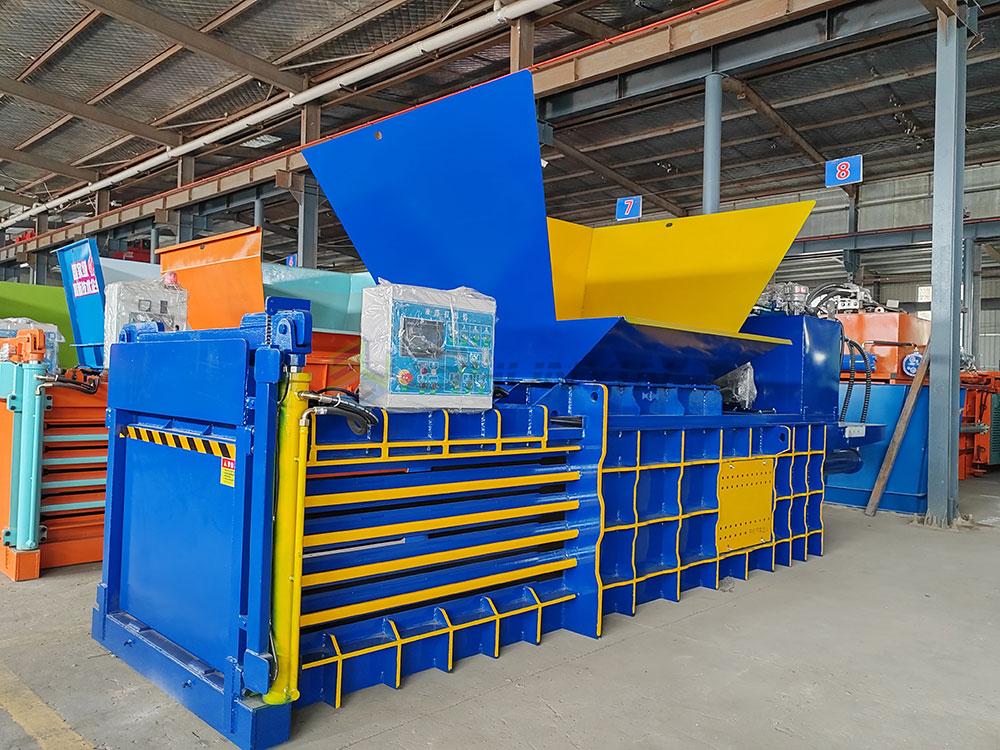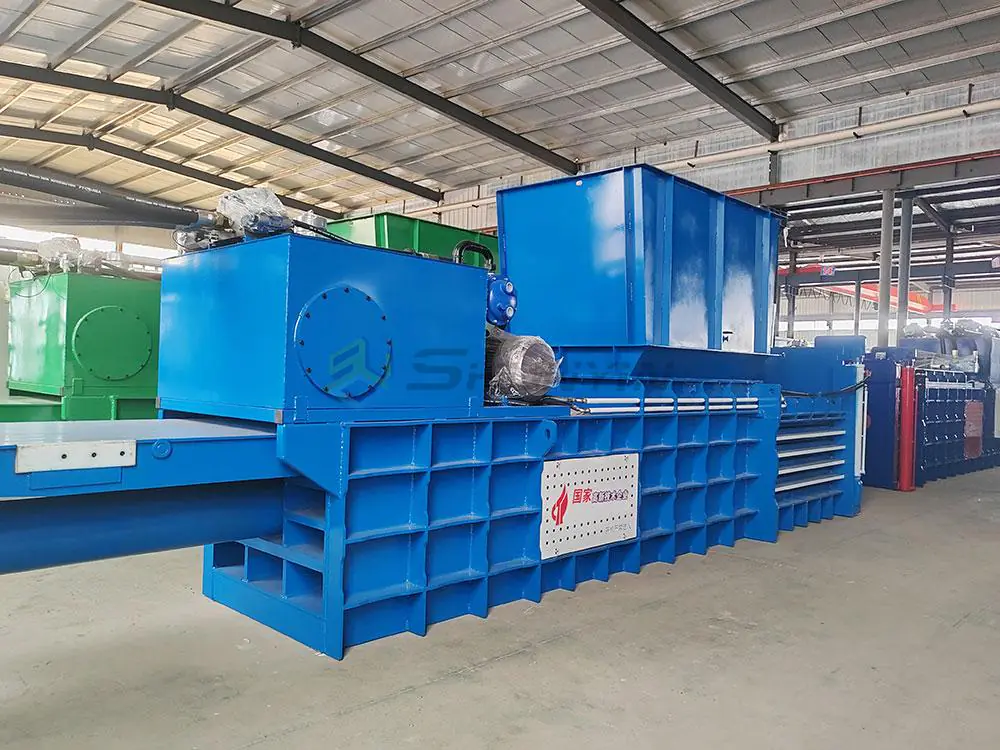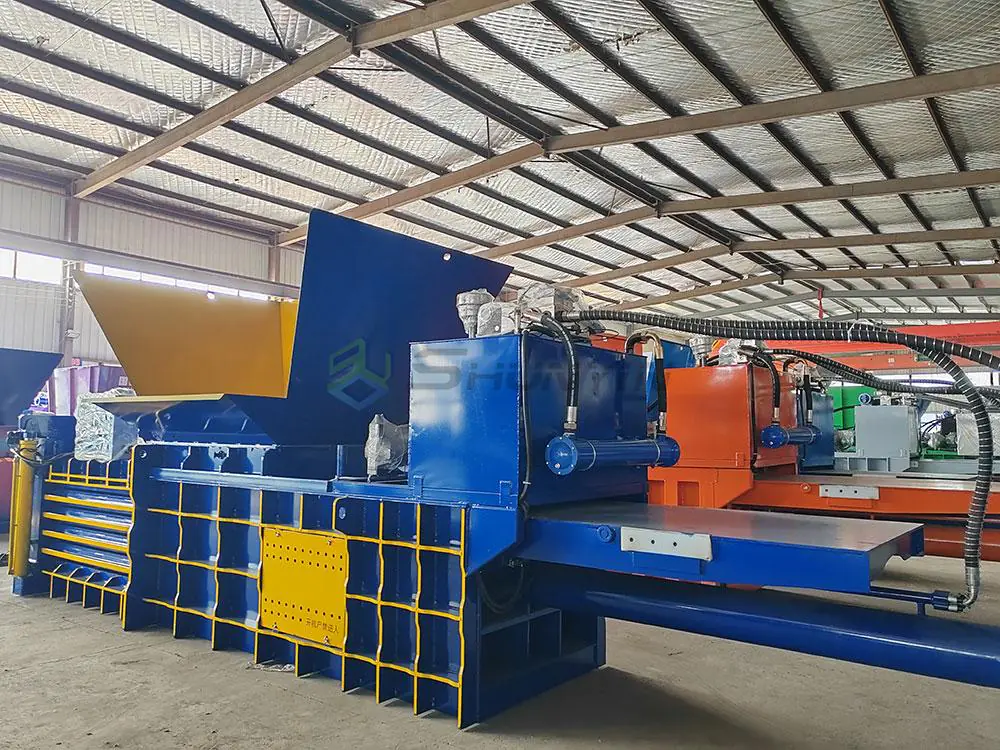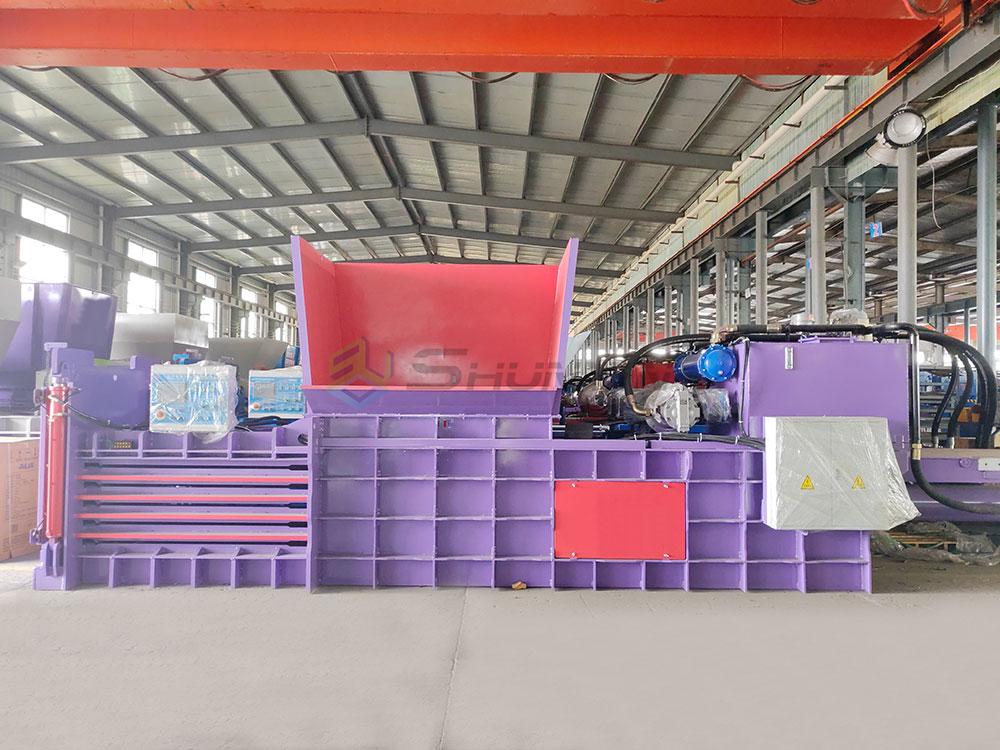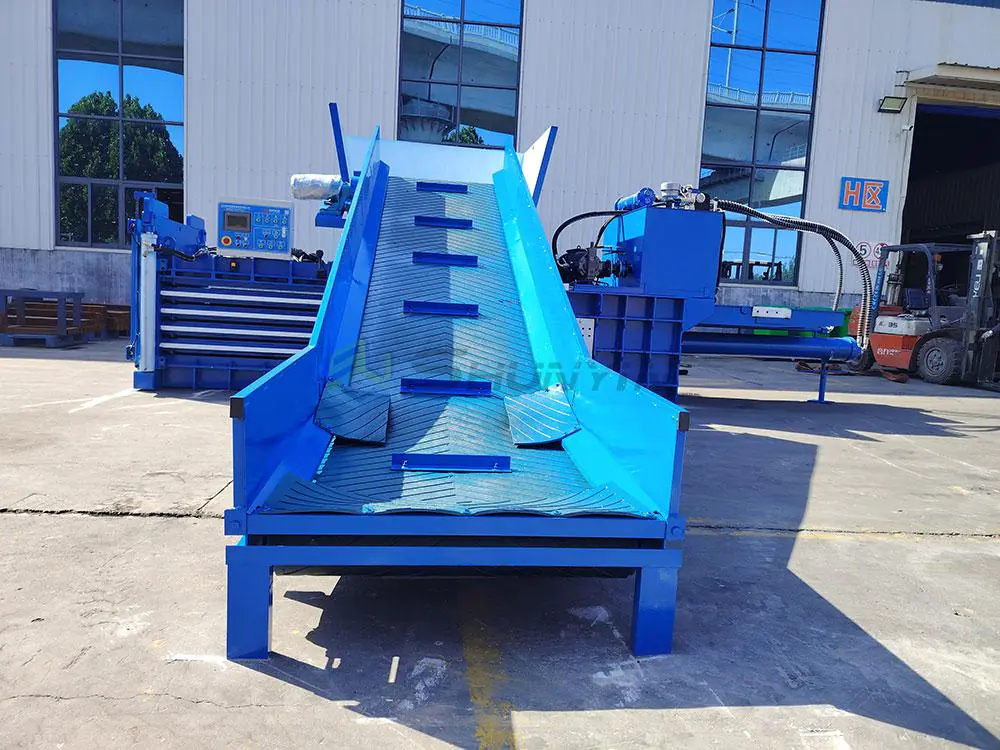
I nearly lost a deal in Stuttgart last month when a client’s manual baler choked on 300kg of wet pizza boxes. That crisis birthed our high-speed 5T/H prototype – now crushing Amazon’s waste quotas across 7 German hubs.
Modern horizontal auto-balers achieve 5 tons/hour through synchronized feed systems (0.8m/s conveyor speed), adaptive RAM pressure (7-35MPa smart adjustment), and 50% faster tie cycles. Our SY-950 model outputs precisely 5.12T/H using double compression chambers and AI waste sorting.
Let me break down the engineering behind high-volume cardboard processing.
What Is the Capacity of a Cardboard Baler?
When Guangzhou’s largest logistics park demanded 8 tons/hour last year, we learned standard balers fail three ways: irregular feeding, thermal throttling, and manual tie delays. Our solution?
**Horizontal baler capacities range 0.5-12T/H, determined by:
1) Hydraulic pump size (11-75kW)
2) Chamber volume (0.8-15m³)
3) Bale weight limits (150-1200kg)
Our SY-550 achieves stable 5T/H through:
- Twin 30kW pumps with oil cooling
- 3.5m³ chamber with auto-compaction
- 7-wire simultaneous tying system**
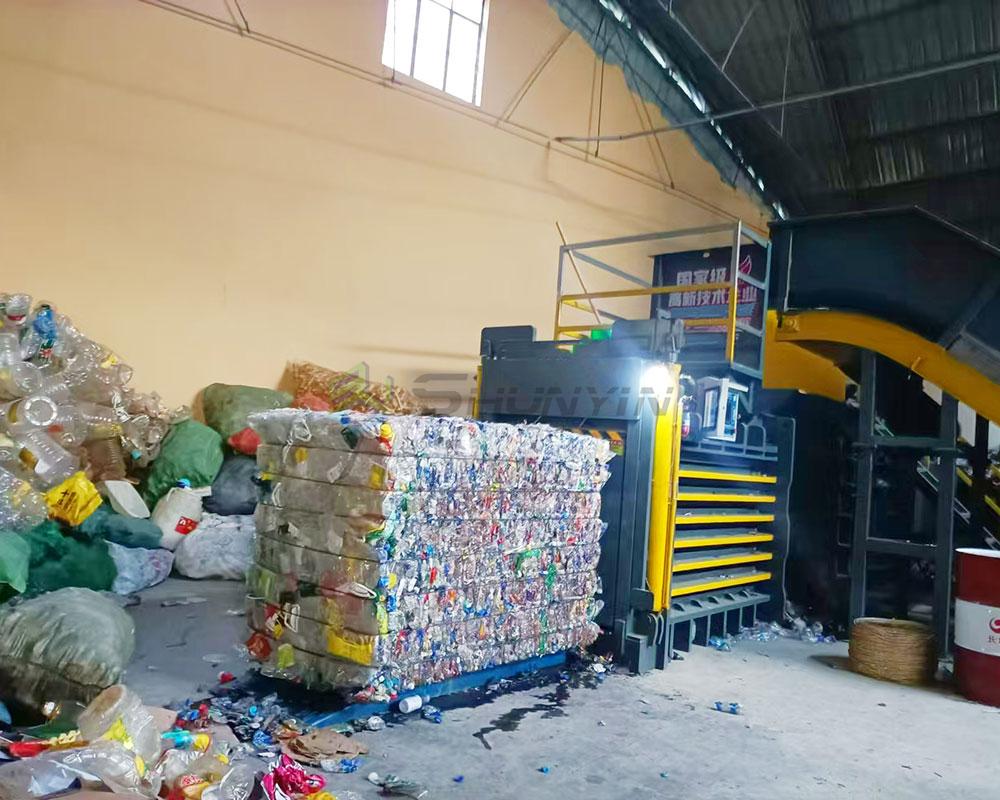
Capacity Benchmark Testing
| Parameter | Manual Unit | Basic Auto | SY-550 (5T/H) |
|---|---|---|---|
| Feed Opening | 1.2m × 0.8m | 1.5m ×1m | 2m ×1.2m |
| Cycle Time | 4.5 min | 2.8 min | 1.4 min |
| Conveyor Speed | 0.3m/s | 0.5m/s | 0.8m/ss |
| Daily Output | 14 tons | 34 tons | 82 tons |
| Energy Use/Ton | $1.82 | $1.13 | $0.76 |
The secret sauce? Our patented waste accelerator arm – a rotating spike crusher that pre-compacts cardboard before main compression. Munich operators reported 22% fewer jams after installing this feature.
What Is a Baling Press Machine Used For?
Last Tuesday, I watched a Bangkok e-waste plant feed shredded servers into our SY-880 – something most engineers would forbid. Their bales now contain 83% less air voids through force optimization.
Baling presses transform loose materials into transportable blocks through hydraulic compression. Key industries use them for:
• E-commerce cardboard recycling (5-12T/H units)
• Textile factory clippings (400kg cotton bales)
• Metal scrap consolidation (2000psi+ for copper)
• Agricultural waste management (hay/plastic mulch)

Material-Specific Pressure Ranges
| Waste Type | Optimal Pressure | Bale Density | Our Recommended Model |
|---|---|---|---|
| Corrugated Cardboard | 12-18MPa | 350kg/m³ | SY-550 (5T/H) |
| PET Bottles | 14-22MPa | 480kg/m³ | SY-720HD |
| Foam Packaging | 4-7MPa | 25kg/m³ | SY-240L |
| Aluminum Cans | 28-35MPa | 610kg/m³ | SY-C1000 |
Critical insight from Osaka testing: higher pressure ≠ better bales. Paperboard requires progressive compression stages – our 3-phase ram system gives 22% tighter bales than standard single-stage units.
How Much Pressure Does a Cardboard Baler Have?
A Montreal plant’s explosion in 2022 taught me pressure safety. Their overboosted pumps hit 55MPa (7850psi) – 40% beyond safe limits. Now our systems cap at 35MPa with triple relief valves.
Cardboard balers operate at 7-35MPa (1000-5000psi), adjusted for:
• Material thickness (6-65pt board)
• Moisture content (3-12% ideal range)
• Bale dimensions (standard 1.1m×0.8m)
Our SmartPress™ AI automatically adjusts pressure every 0.4s via 14 chamber sensors.

Pressure Optimization Guide
-
Thin Cardboard (<15pt)
7-12MPa in 3 stages: pre-flatten (3MPa) → main compact (9MPa) → final squeeze (12MPa) -
Corrugated (15-35pt)
12-18MPa with lateral compression arms engaged -
Wet/Damaged Board
15-23MPa + 5-second moisture purge cycle -
Mixed Loads
Radar density scanning adjusts pressure ±5MPa dynamically
Operators in Barcelona saved 31% energy using our adaptive profile rather than fixed pressure. Units also track pump wear – replacing seals every 300,000 cycles prevents pressure drops.
What Is a Cardboard Baling Machine?
I’ll never forget the Phoenix facility where workers loaded cardboard manually for 10 hours daily. Our SY-AF50 automated system cut labor needs from 6 to 1.5 workers per shift.
Automatic cardboard balers integrate:
• 0.3-1.8m wide steel conveyor belts
• 1.5-15m³ compression chambers
• 70-280 bar hydraulic systems
• Bale ejection (mechanical/pneumatic)
• Wire/strap tying mechanisms

Component Breakdown
1. Feeding System
Our VFD-controlled conveyor prevents overloads:
- Weight limit sensors (max 250kg/min)
- Metal detectors with auto-reject arms
- Spike rollers for thick board separation
2. Compression Unit
Double-acting cylinders work with:
- Pressure sensors (12 per ram)
- Guiding rails (±0.05mm precision)
- Scraper blades prevent sticking
3. Tying Mechanism
6-9 wires applied with:
- Tension control (40-60kg/wire)
- Clip lock accuracy (0.2mm tolerance)
- Automatic feeding reels
4. Ejection System
Pusher plate transfers bales to:
- Roller conveyors
- Pallet stackers
- Robotic arms (custom installs)
Toronto facility increased processing by 15% after we installed their tilted ejection chute – simple physics making bale release 2 seconds faster per cycle.
Conclusion
Hitting 5T/H requires more than power – it’s precision engineering. Request our cardboard calculator at [email protected]. First 50 inquiries get free throughput analysis.


